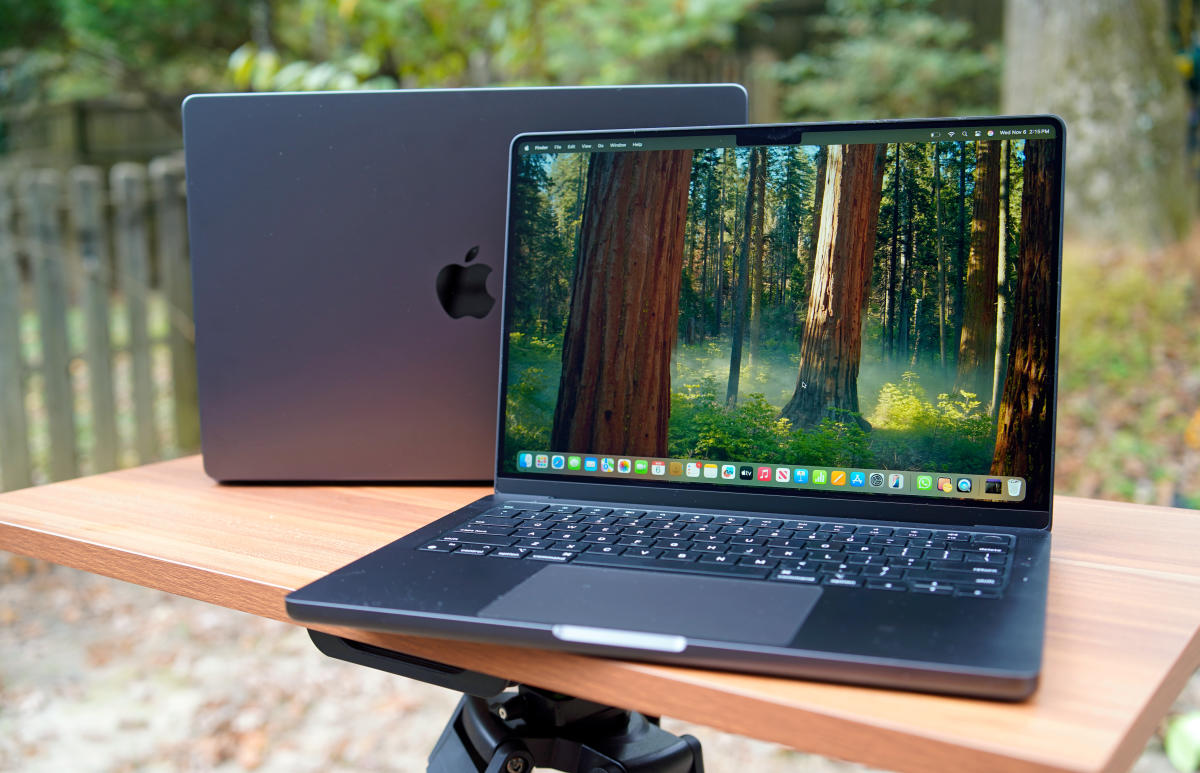Apple’s excellent MacBook Pros are faster than ever with their new M4 chips. That’s it, this review. Their screens are a little brighter, and the 14-inch model now starts with 16GB of RAM, but otherwise these are the same laptops that have been around since the M1 Pro redesign in 2021. However, it’s not really like Apple had to improve much. MacBook Pros have been one of our favorite premium laptops for years – now they’re better.
When I last reviewed Apple’s MacBook Pros, I concluded by saying, “Just try to save money for 16GB of RAM.” Now, thanks to the increasing memory demands of Apple intelligence, this isn’t something anyone has to worry about again. This makes the $1,599 14-inch MacBook Pro a better deal than ever (previously you had to add another $200 to get to 16GB). The 16-inch model, which starts at $2,499 with 24GB of RAM, is also the better choice for big-screen fans because its M4 Pro chip is a tremendous upgrade over last year’s hardware.
What’s new in the M4 MacBook Pro
The stars of the show this year are Apple’s new M4, M4 Pro chips, and M4 Max chips. The M4 has a 10-core CPU and 10-core GPU, while the Pro has a 14-core CPU and 20-core GPU. The Max model, as usual, is even tougher: it has a 16-core CPU and 40-core GPU.
As you might have expected, those more powerful chips increase prices dramatically: The M4 Pro 14-inch MacBook Pro starts at $1,999 ($400 more than the base model), while the M4 Max model starts at $3,199. At least you get slight RAM and storage bumps with those more expensive chips, the M4 Pro starts at 24GB of RAM, while the Max model includes 36GB of RAM and a 1TB SSD.
In addition to the dramatically improved chips, all new MacBook Pros have MiniLED Liquid Retina XDR screens that can reach up to 1,000 nits for SDR (standard dynamic range) content.
That’s a 400-nit increase from before, and should help make content more visible in daylight or in very bright rooms. (HDR content, as usual, can push the display even further, to a peak of 1,600 nits.) There’s also a nano-textured glass option (for a $150 surcharge) that can make the screen more glare-resistant, which is useful for working in bright environments. Note, however, that it can also make the screen less sharp.
Apple has also upgraded the MacBook Pros’ webcam to 12-megapixels, which is a big jump over the previous 1080p camera. (Apple hasn’t confirmed the megapixel figure for that camera, but it’s probably around 2MP, which is the minimum to reach 1080p). Having a higher resolution camera also opens the door for Center Stage, which can keep you in focus as you move around the room.
I didn’t hate Apple’s previous webcams, but that’s because I remember how mediocre its old 720p webcams used to be. The new models look far sharper, with more accurate colors, and the overall image doesn’t look as heavily filtered as previous cameras. They also support Desk View (above), Apple’s Assistant feature for showing objects below your screen.
If you frequently deal with large file transfers, you might also appreciate the support for Thunderbolt 5 on the M4 Pro and M4 Max chips. It can support speeds of up to 120 Gb/s, which is up from the 40 Gb/s in Thunderbolt 4, which includes the standard M4 chip. If you’re moving terabytes of 4K and 8K video to an external drive, this could make a huge difference – just keep in mind that you’ll need to invest in similarly equipped Thunderbolt 5 storage. Thunderbolt 5 could potentially allow for external AI accelerators (unfortunately, Apple Silicon doesn’t support external GPUs).
In use: The best MacBook Pro ever
I didn’t really expect much from the new MacBook Pros, especially since the previous M3 models were already very impressive. But, once again, Apple surprised me with its mobile hardware. The M4 chip, which was in our 14-inch review unit, was a solid performer. But the M4 Pro in our 16-inch MacBook Pro was a stunning leap from its predecessor, and it’s also faster than every other computer we’ve tested this year (except for the new Mac mini, which also had an M4 Pro chip).
Unfortunately, we didn’t have an M4 Max-equipped MacBook Pro for testing, but given that it’s packed with more M4 CPU and GPU cores, I’d expect an even bigger performance leap.
